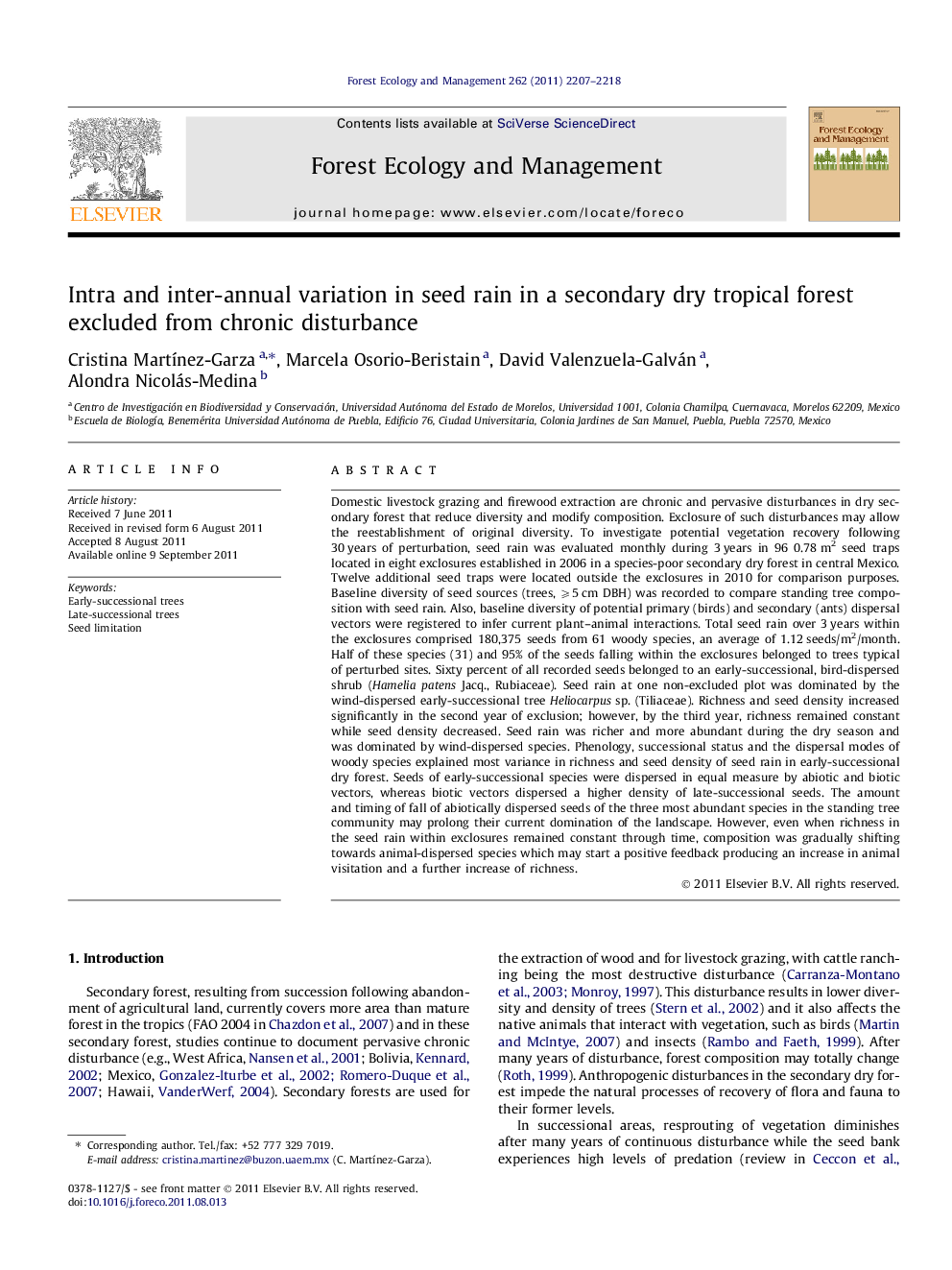| کد مقاله | کد نشریه | سال انتشار | مقاله انگلیسی | نسخه تمام متن |
|---|---|---|---|---|
| 87807 | 159267 | 2011 | 12 صفحه PDF | دانلود رایگان |

Domestic livestock grazing and firewood extraction are chronic and pervasive disturbances in dry secondary forest that reduce diversity and modify composition. Exclosure of such disturbances may allow the reestablishment of original diversity. To investigate potential vegetation recovery following 30 years of perturbation, seed rain was evaluated monthly during 3 years in 96 0.78 m2 seed traps located in eight exclosures established in 2006 in a species-poor secondary dry forest in central Mexico. Twelve additional seed traps were located outside the exclosures in 2010 for comparison purposes. Baseline diversity of seed sources (trees, ⩾5 cm DBH) was recorded to compare standing tree composition with seed rain. Also, baseline diversity of potential primary (birds) and secondary (ants) dispersal vectors were registered to infer current plant–animal interactions. Total seed rain over 3 years within the exclosures comprised 180,375 seeds from 61 woody species, an average of 1.12 seeds/m2/month. Half of these species (31) and 95% of the seeds falling within the exclosures belonged to trees typical of perturbed sites. Sixty percent of all recorded seeds belonged to an early-successional, bird-dispersed shrub (Hamelia patens Jacq., Rubiaceae). Seed rain at one non-excluded plot was dominated by the wind-dispersed early-successional tree Heliocarpus sp. (Tiliaceae). Richness and seed density increased significantly in the second year of exclusion; however, by the third year, richness remained constant while seed density decreased. Seed rain was richer and more abundant during the dry season and was dominated by wind-dispersed species. Phenology, successional status and the dispersal modes of woody species explained most variance in richness and seed density of seed rain in early-successional dry forest. Seeds of early-successional species were dispersed in equal measure by abiotic and biotic vectors, whereas biotic vectors dispersed a higher density of late-successional seeds. The amount and timing of fall of abiotically dispersed seeds of the three most abundant species in the standing tree community may prolong their current domination of the landscape. However, even when richness in the seed rain within exclosures remained constant through time, composition was gradually shifting towards animal-dispersed species which may start a positive feedback producing an increase in animal visitation and a further increase of richness.
► We monitored seed rain during 3 years in 8 plots excluded from perturbation.
► Seed rain showed a regular monthly pattern irrespective of year of exclusion.
► Regular monthly pattern allows managers for easily collecting species for propagation.
► Monitoring composition was more useful to detect natural succession than richness.
► Composition was gradually shifting towards immigrant species dispersed by animals.
Journal: Forest Ecology and Management - Volume 262, Issue 12, 15 December 2011, Pages 2207–2218